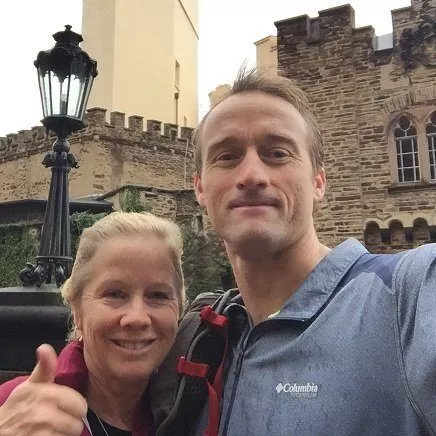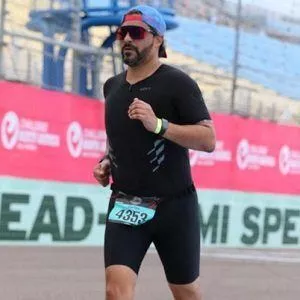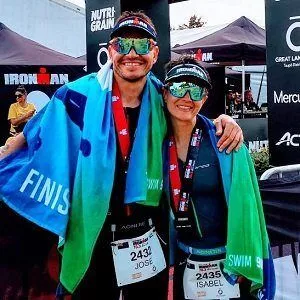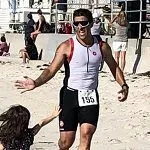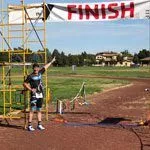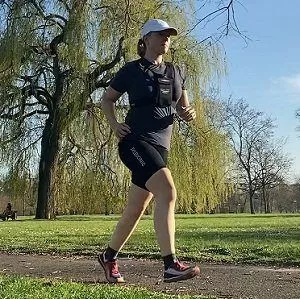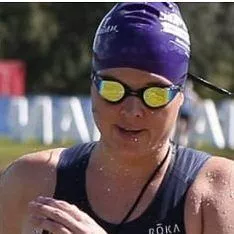Planning Your Race Season
Each of the 80/20 training plans lead up to a single high-priority race (or “A race”). This is a standard structure for ready-made training plans, which by their nature must incorporate as much flexibility as possible so they can be used by as many athletes as possible. It goes without saying that if additional, "B races" were incorporated, the flexibility of the plans would be greatly reduced, as many athletes like to focus on one race at a time, while those who do like to race more often have individual preferences for, and constraints on, when and at what distances they compete.
Doing B races has certain advantages. These “tune-up” events offer additional opportunities to test your fitness and reward your training and to gain race experience. They also serve as highly challenging workouts that stimulate further gains in fitness.
The best times to schedule B races are in recovery weeks, when your training load is lower. You will be best able to compete at a high level at the end of these weeks, and racing at these times will disrupt your training less than trying to shoehorn a race into a “build” week.
As a general rule, your B races should be shorter than your A race. If your A race itself is short (for example, a sprint triathlon) your B races can be as long or even slightly longer (another sprint or an Olympic-distance event in this example). Avoid racing too early in the training cycle, when you’re far from peak fitness. Also avoid racing too often. Trying to cram more than a handful of races into a single training cycle will compromise your training and likely also your performance in your A race. The table below provides recommended B race dates and distances for all of our training plans. You should not feel obligated to do any B races if you prefer not to or you don’t have convenient opportunities.
| Level | Event | Recommended B Race Event (in order of recommendation) | Primary B Race Week | Secondary B Race Week |
|---|---|---|---|---|
| 0 | 5k | NA | none | none |
| 1 | 5k | 5K | 6 | none |
| 2 | 5k | 5K, 10K | 6 | none |
| 3 | 5k | 5K, 10K | 6 | none |
| 0 | 10k | 5K | 9 | none |
| 1 | 10k | 5K | 9 | none |
| 2 | 10k | 5K, 10K | 9 | 6 |
| 3 | 10k | 5K, 10K | 9 | 6 |
| 0 | Half Marathon | 10K | 12 | none |
| 1 | Half Marathon | 10K, 5K | 12 | 9 |
| 2 | Half Marathon | 10K, 5K | 12 | 9 |
| 3 | Half Marathon | 10K, 5K | 12 | 9 |
| 0 | Marathon | Half Marathon, 10K | 15 | 12 |
| 1 | Marathon | Half Marathon, 10K | 15 | 12 |
| 2 | Marathon | Half Marathon, 10K | 15 | 12 |
| 3 | Marathon | Half Marathon, 10K | 15 | 12 |
| 0 | Sprint Triathlon | 5k, 10k | 9 | none |
| 1 | Sprint Triathlon | 5k, 10k | 14 | 12 |
| 2 | Sprint Triathlon | Sprint, 10k, 5k | 17 | 14 |
| 3 | Sprint Triathlon | Sprint, 10k, 5k | 17 | 14 |
| 0 | Olympic Triathlon | Sprint, 10k | 14 | 12 |
| 1 | Olympic Triathlon | Sprint, 10k | 14 | 12 |
| 2 | Olympic Triathlon | Olympic, Sprint, Half Marathon, 10k | 17 | 14 |
| 3 | Olympic Triathlon | Olympic, Sprint, Half Marathon, 10k | 17 | 14 |
| 0 | Half Ironman | Olympic, Sprint | 12 | 9 |
| 1 | Half Ironman | Olympic, Sprint | 12 | 9 |
| 2 | Half Ironman | Olympic, Half Marathon, Sprint | 16 | 13 |
| 3 | Half Ironman | Half Ironman, Olympic, Half Marathon | 18 | 14 |
| 0 | Ironman | Olympic, Sprint, Half Marathon | 18 | 15 |
| 1 | Ironman | Olympic, Half Marathon, Sprint | 18 | 15 |
| 2 | Ironman | Half Ironman, Olympic, Half Marathon | 16 | 20 |
| 3 | Ironman | Half Ironman, Olympic, Half Marathon | 16 | 20 |
Race participation should not reduce total scheduled weekly volume by more than 2 hours. For example, if a 3-hour training day is replaced by a half marathon event, the athlete should either complete the scheduled hours for the day with a long cooldown, or schedule slightly more volume earlier in the week.
Some racing schedules challenge the limits of a readymade training plan’s flexibility. For example, you might have your heart set on doing two Ironman 70.3 events that are ten weeks apart and you really want to perform your best in both. Or perhaps you’d like to do a 50K ultramarathon seven weeks after completing an Ironman. In these scenarios, you may need to A) make certain modifications to the training plan you choose and/or B) link together two training plans, possibly without completing one of them. But the specifics need to be worked out case by case.
Returning to the example of targeting two Ironman 70.3’s ten weeks apart, here’s the solution we would recommend:
- Choose the Ironman 70.3 plan that best suits you and have it end on the day of your first Ironman 70.3 event.
- Take it easy for one week.
- Repeat the last nine weeks of the same plan, so that this time it ends on the day of your second Ironman 70.3 event. You can fine-tune this approach for even better results with these additional steps:
Slightly shorten some of the most challenging workouts in your chosen plan the first time through (for example, remove one interval from a speed session, lop one mile off a long run). This will help you avoid burning out when you repeat the last nine weeks in preparation for your second Ironman 70.3 event.
When you do repeat the last nine weeks of your training plan in preparation for your second Ironman 70.3 event, modify the first two weeks of these nine to make them look more like base training, specifically by reducing the amount of time you spend in Zones 3-5 from 20 percent to 10-15 percent. This will also reduce your chances of overcooking yourself before that second race.
If this is starting to sound too complicated, don’t worry, there’s another option: getting individual coaching from one of us. This is definitely the way to go if you wish to take a “seasonal” approach to racing with multiple events, perhaps at multiple distances or even in more than one endurance discipline, within a relatively short span of time. This can be done successfully, but it requires a nonlinear approach to periodization (workout sequencing) that is different from the linear approach used in our plans and is very difficult to do correctly without individual attention from an expert coach.














